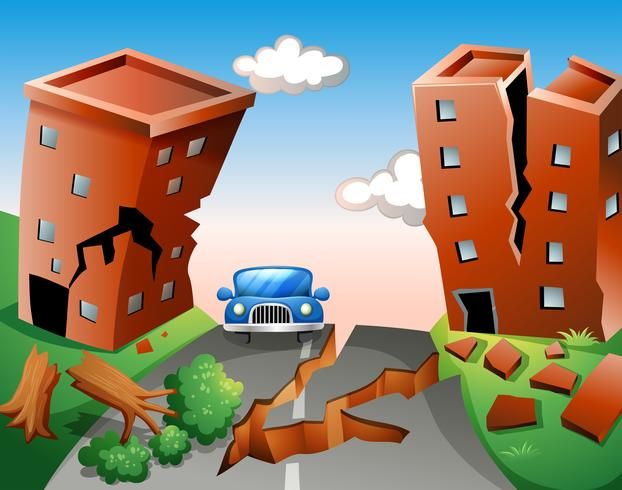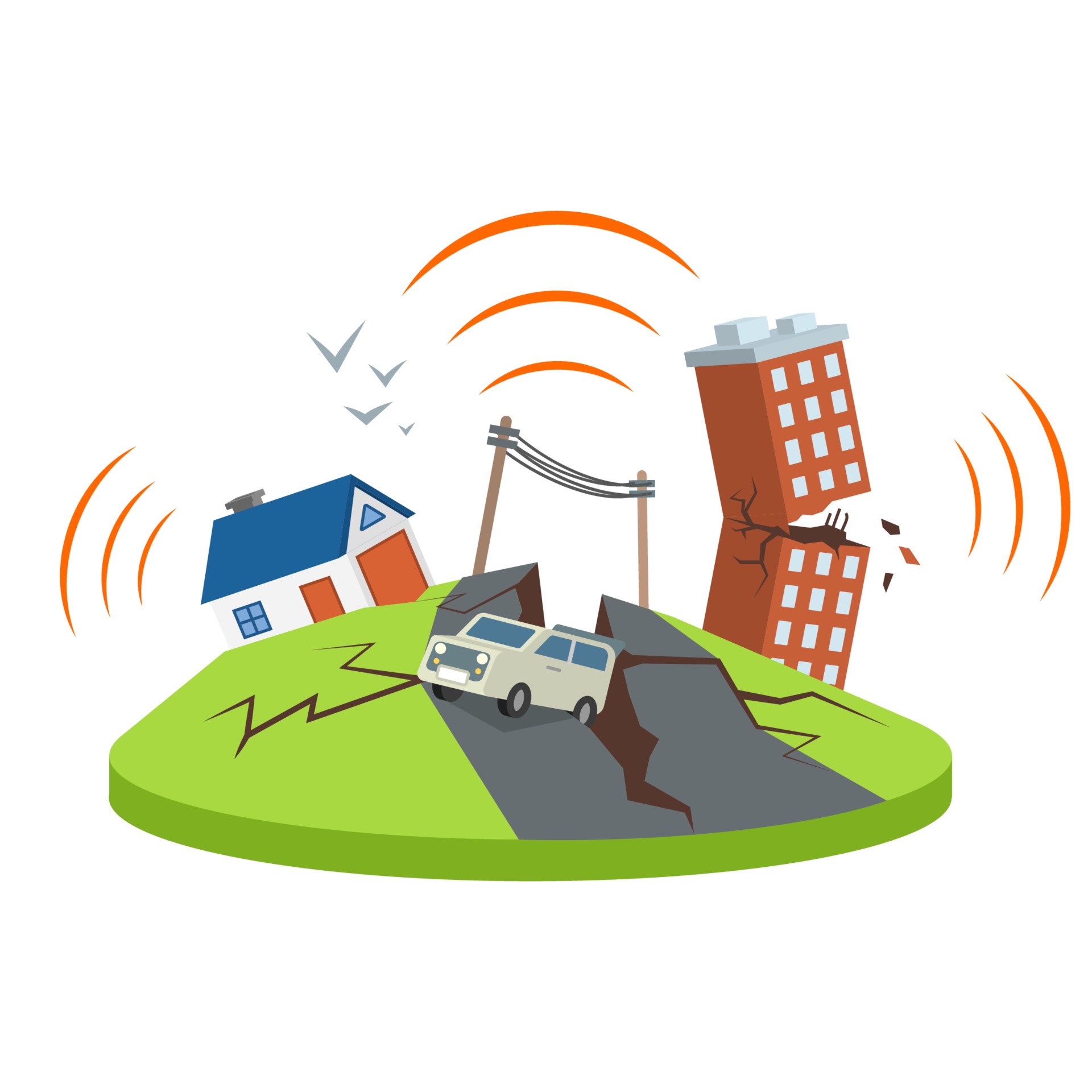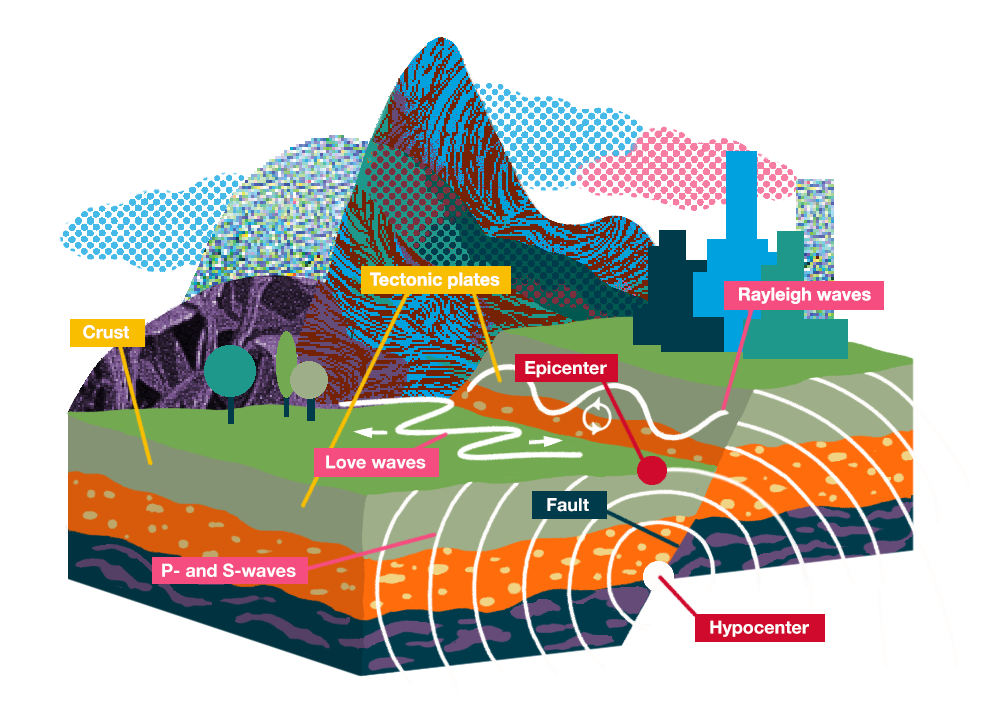Earthquakes are natural phenomena that have fascinated and terrified humanity for centuries. They occur when there is a sudden release of energy in the Earth's crust, resulting in seismic waves that can shake the ground and create significant destruction. From the devastating earthquakes that have reshaped cities to the subtle tremors that go unnoticed, these events are a reminder of the dynamic nature of our planet. In this post, we will explore the intricacies of earthquakes, diving into animations and explanations found on Dailymotion that bring this complex subject to life.
The Science Behind Earthquakes

Understanding how earthquakes occur involves diving deep into geology and the behavior of our planet’s layers. To break it down, the Earth consists of several layers, namely the:
- Crust: The outermost layer where we live.
- Mantle: The thick layer beneath the crust, made of semi-solid rock.
- Outer Core: A molten layer of iron and nickel.
- Inner Core: A solid, dense ball of iron at the center of the Earth.
Most earthquakes occur along tectonic plate boundaries where these plates interact. Here are the primary causes:
| Type of Movement | Description | Example |
|---|---|---|
| Convergent Boundaries | Plates move towards each other, causing one to be pushed under another. | Subduction zones |
| Divergent Boundaries | Plates move apart, allowing magma to rise and create new crust. | Mid-Ocean Ridges |
| Transform Boundaries | Plates slide past each other horizontally, causing friction. | San Andreas Fault |
As stress builds up at these boundaries, it eventually exceeds the strength of rock, leading to a sudden slip that releases energy in the form of seismic waves. This is what we experience as an earthquake! Exciting animations available on platforms like Dailymotion can foster a better understanding of how these processes unfold, bringing the science of earthquakes to viewers in a visually engaging manner.
Also Read This: Football Basics for Beginners: Learn with Dailymotion Tutorials
Animation Overview

When it comes to understanding complex phenomena like earthquakes, animations can be a real game-changer. They provide a visual representation that makes the intricate processes behind seismic activity much easier to grasp. The animation featured on Dailymotion does exactly that—using vivid illustrations and engaging graphics to explain how earthquakes occur.
In the animation, viewers will see various tectonic plates, which are massive sections of the Earth's crust that constantly move, albeit very slowly. As these plates shift, they can interact in several ways, leading to energy build-up that eventually causes an earthquake. The animation breaks this down into digestible segments, clearly showing the three main types of plate boundaries: divergent, convergent, and transform.
For instance, when a divergent boundary is illustrated, viewers can see plates moving apart, creating new crust. In contrast, the convergent boundary shows one plate pushing against another, leading to an immense release of energy when they get stuck. This dynamic representation helps make it easier to visualize the concepts of stress and strain in solid materials, as well as how these lead to the seismic waves we experience during an earthquake.
What’s particularly engaging about this animation is the use of sound effects and vivid colors that draw you in while you learn. It captures the moment an earthquake strikes, illustrating the rapid release of energy that shakes the ground, along with secondary effects such as tsunamis and aftershocks. All in all, the animation serves as an excellent tool, making complex scientific ideas accessible and entertaining.
Also Read This: How to Make COD4 Server: Gaming Tutorial on Dailymotion
Different Types of Earthquakes

Earthquakes are not a one-size-fits-all phenomenon; they come in various types, each with its own causes and characteristics. Understanding these differences is crucial for anyone looking to grasp the mechanics behind seismic activity.
- Tectonic Earthquakes: The most common type, caused by the movement of tectonic plates. These may occur at plate boundaries or within a plate.
- *Subtypes include:
- Interplate: Occur between tectonic plates; often result in large magnitude earthquakes.
- Intraplate: Happen within a tectonic plate, typically less intense but can still be destructive. - Volcanic Earthquakes: These occur in volcanic regions, usually as magma moves within the Earth. They can precede eruptions or occur as the volcano settles post-eruption.
- Collapse Earthquakes: Often small in magnitude, these occur when underground mines or caverns collapse, causing the ground above to settle unequally.
- Induced Earthquakes: Resulting from human activities, such as mining, reservoir-induced seismicity from large dams, or geothermal energy extraction. These can sometimes lead to significant seismic events.
Each of these types of earthquakes brings unique challenges, whether it’s predicting their occurrence, understanding their impact, or implementing safety measures. Knowing the difference can help communities prepare and respond effectively to various seismic threats.
Also Read This: Effective Weight Loss Strategies with Dailymotion’s Best Tips and Routines
Causes of Earthquakes
Earthquakes are fascinating yet frightening natural phenomena, and they occur for several reasons. Let’s break it down in simpler terms so we can really grasp what’s happening beneath our feet.
At the core of most earthquakes are the movements of tectonic plates. These massive slabs of the Earth's surface are constantly shifting, albeit very slowly. When these plates interact, they can either push against one another, pull apart, or slide past each other, creating stress along fault lines. Here’s a handy list of primary causes:
- Tectonic Movements: Most earthquakes are caused by the movement of the Earth's tectonic plates. The boundaries where these plates meet are often the most seismically active.
- Volcanic Activity: Earthquakes can also happen when magma from the Earth’s interior pushes its way to the surface, causing the ground to shake.
- Human Activities: Sometimes, human actions like mining, reservoir-induced seismicity (from large reservoirs), or fracking can lead to earthquakes.
- Fault Lines: Stress builds up along these fractures in the Earth's crust until it’s released, producing an earthquake.
Understanding these causes not only helps to predict when and where earthquakes may occur, but it also aids in developing mitigation strategies to protect our communities. The more we know, the safer we can be!
Also Read This: How to Download Dailymotion Videos on Android: Easy Steps for Mobile Downloads
Impact of Earthquakes on the Environment
When we think of earthquakes, we often picture crumbling buildings and chaos in urban areas, but the environmental impact can be just as profound, if not more so. Let's explore this together.
Earthquakes can significantly alter landscapes and ecosystems. Here are some ways they can impact the environment:
- Land Deformation: The surface of the Earth can dramatically change, leading to the formation of new land forms, such as cracks, fissures, or even new rivers.
- Soil Liquefaction: During an earthquake, saturated soil can lose its strength and stability, causing it to behave like a liquid. This phenomenon can lead to severe damage.
- Water Contamination: Ground shaking can rupture pipelines or sewage systems, contaminating local water supplies and affecting wildlife.
- Changes to Habitats: Many animal species are sensitive to environmental changes. An earthquake can disrupt their habitats, leading to population declines.
The long-term consequences of these impacts are crucial. Ecosystems can take years to recover, which in turn affects biodiversity and natural resources. It's important to consider not just the immediate effects of earthquakes but also their lasting impact on our planet.
Also Read This: Master the Art of Swaddling Your Baby with Dailymotion Video Tutorials
7. Safety Measures During an Earthquake
When it comes to earthquakes, preparation is key! Knowing what to do can make a world of difference. Here are some effective safety measures to keep in mind:
- Drop, Cover, and Hold On! - This is the most recommended action during an earthquake. Drop to your hands and knees to prevent being knocked over, cover your head and neck under a sturdy piece of furniture, and hold on until the shaking stops.
- Stay Indoors - If you're inside, stay where you are. Do not run outside during the shaking as falling debris can be dangerous.
- Move Away from Windows - Glass can shatter during an earthquake, so heading to the interior walls or away from structures that may buckle is wise.
- Prepare an Emergency Kit - Ensure you have a kit with essential supplies like food, water, a flashlight, batteries, and a first-aid kit.
- Practice Earthquake Drills - Regular drills can familiarize you with what to do, making responses feel more natural when it happens.
In case you're outdoors, find an open area* and stay away from buildings, trees, and utility wires. If you're driving, pull over to a safe spot and stay inside until the shaking stops.
8. Conclusion and Further Resources
Understanding how earthquakes occur and knowing how to stay safe is fundamental for everyone, especially those living in earthquake-prone areas. Awareness and preparation can greatly diminish the risks associated with seismic activities. By practicing safety measures, you significantly enhance your chances of staying safe during an earthquake.
For further reading and deeper insights, explore these resources:
| Resource | Description |
|---|---|
| USGS Earthquake Hazards | A comprehensive resource on earthquake science and safety tips. |
| Ready.gov | Offers preparedness guides and safety recommendations from FEMA. |
| USGS Earthquake Preparation | Detailed information on creating a family emergency plan. |
By staying informed and prepared, you can make sure that you and your loved ones are ready to face any earthquake challenges that may come your way!
 admin
admin








